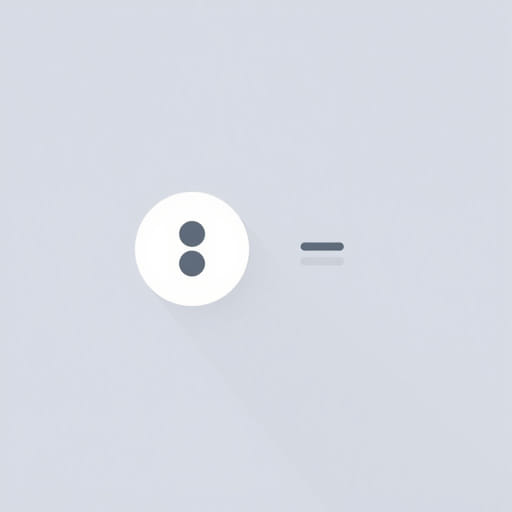Understanding the logic behind conditional statements and their truth values is essential in subjects like mathematics, computer science, and philosophy. One key tool for analyzing such statements is the truth table. In particular, the ‘or’ conditional truth table is used to determine the outcome of logical expressions that involve the logical disjunction operator. This concept, although abstract at first, is quite powerful in forming valid arguments, creating algorithms, and evaluating logical conditions. By studying how ‘or’ works in a truth table, learners can grasp the foundation of logic used in both academic and real-world problem-solving.
What Is a Truth Table?
A truth table is a visual representation that outlines the truth values of a compound logical statement for all possible combinations of its components. Each row in the table shows one possible combination of truth values for the variables involved, along with the resulting truth value of the full expression.
Why Use Truth Tables?
- To verify logical validity
- To evaluate logical statements
- To support reasoning in programming and algorithms
- To understand how operators like ‘and,’ ‘or,’ and ‘not’ work
Truth tables are fundamental in learning and applying propositional logic.
Understanding the ‘Or’ Logical Operator
The ‘or’ operator, represented as ∨ in logic or simply ‘or’ in written form, is a logical disjunction. It evaluates to true if at least one of the involved statements is true. This means the entire expression is only false if both statements are false.
Symbolic Representation
The ‘or’ operator is commonly written as:
P ∨ Q
Where P and Q are propositions (statements that can be either true or false).
Meaning of Each Condition
- If P is true and Q is true, then P ∨ Q is true.
- If P is true and Q is false, then P ∨ Q is true.
- If P is false and Q is true, then P ∨ Q is true.
- If P is false and Q is false, then P ∨ Q is false.
This definition is the core of the ‘or’ conditional truth table.
Constructing the ‘Or’ Truth Table
To better understand the logic of the ‘or’ operator, consider the following truth table that evaluates all the possible combinations of P and Q:
| P | Q | P ∨ Q |
|---|---|---|
| True | True | True |
| True | False | True |
| False | True | True |
| False | False | False |
This table clearly shows how the result of P ∨ Q depends on the individual truth values of P and Q.
Application of ‘Or’ Conditional Logic
Understanding the ‘or’ operator is not just theoretical it has practical applications in many disciplines. Here are a few ways it’s used:
1. Computer Science
In programming, the ‘or’ operator (often written as||in many languages) is used in conditional statements:
if (userIsAdmin || userIsModerator) { allowAccess(); }
This condition will evaluate to true if either the user is an admin or a moderator, allowing access accordingly.
2. Digital Logic and Circuits
In electronics, the OR gate is a basic building block. It outputs a high signal (true) if one or more of its inputs are high.
3. Decision-Making
In everyday reasoning, people use ‘or’ logic to make choices:
‘I will go to the beach or stay home, depending on the weather.’
This implies that if either option is suitable based on external conditions, a decision will be made accordingly.
Comparison: ‘Or’ vs. ‘And’
To fully appreciate the ‘or’ operator, it’s useful to compare it with the ‘and’ ( ∧ ) operator.
- ‘P ∨ Q’ is true if either or both are true.
- ‘P ∧ Q’ is only true if both are true.
This difference is crucial in logic systems, programming, and mathematics.
Extended Forms: Inclusive vs. Exclusive ‘Or’
There are two main forms of ‘or’ in logic:
Inclusive ‘Or’ (Standard)
This is the common form used in truth tables. It is true if either or both statements are true.
Exclusive ‘Or’ (XOR)
This version is true only if exactly one of the two statements is true, not both.
Here’s the truth table for XOR:
| P | Q | P ⊕ Q |
|---|---|---|
| True | True | False |
| True | False | True |
| False | True | True |
| False | False | False |
This variation is common in advanced logic and digital systems.
Visualizing ‘Or’ Logic with Venn Diagrams
Venn diagrams are useful for illustrating the concept of ‘or.’ In a diagram with two overlapping circles representing P and Q, the area representing P ∨ Q includes both individual areas and the overlapping region. This visual shows that ‘or’ includes all parts where either P, Q, or both are true.
Best Practices for Learning Truth Tables
To master truth tables and logical operations like ‘or,’ try these tips:
- Practice with real-world examples and logic puzzles.
- Create your own truth tables for different compound statements.
- Compare different logical operators side by side.
- Use logic simulation tools or apps to visualize logic gates.
- Apply logic to everyday decisions to reinforce understanding.
Consistent practice helps solidify how each operator works and improves logical thinking.
The ‘or’ conditional truth table is a foundational concept in logical reasoning, essential for disciplines ranging from mathematics and computer science to everyday decision-making. By learning how to construct and interpret truth tables, especially for the ‘or’ operator, learners can develop a clearer understanding of logical relationships and how conditions influence outcomes. With its simple structure and practical application, mastering the ‘or’ truth table empowers students and professionals alike to think critically and apply logic effectively in various contexts.
